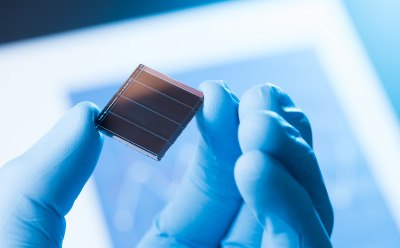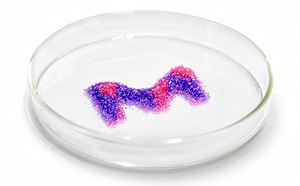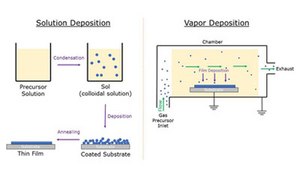Photovoltaics & Solar Cells

Solar photovoltaic technology converts light into electricity at the atomic level. The photoelectric effect causes certain semiconductor materials to absorb sunlight particles or photons, and release electrons. A photovoltaic cell produces electricity from visible light; a solar cell absorbs the full range of light frequencies, not just visible light, from sunlight and converts solar radiation into useful energy. As a safe, sustainable, and efficient source of energy, photovoltaic and solar cell systems are used for network or isolated power generation in many types of devices, from electric vehicles (EVs) and solar roofs to water pumping and desalination systems.
Photovoltaic cells utilize layered semiconductor materials as a PN junction to convert light energy in the form of photons to electric current in the form of electrons. The PN junction is an interface between a p-type semiconductor (electron acceptor material) and an n-type semiconductor (electron donor material). When the photon is absorbed by the n-type semiconductor, an electron is dislodged, generating a free electron and electron-hole pair. The negatively charged electron is attracted to the p-type material, and the positively charged hole is attracted to the n-type material. If a completed circuit is connected to the electrodes, the free electron will travel through the circuit, creating electric current and voltage, until it recombines with an electron-hole back in the p-type material.
Featured Categories
We offer powerful and stable solar energy materials, perovskites, quantum dots, and lead-free alternatives to increase the power conversion efficiency of your renewable energy applications.
We offer a wide range of high-purity salts, including nitrates, oxalates, halides, sulfates, carbonates, and acetates, available in both anhydrous and hydrated forms.
Our high-quality solution deposition and vapor deposition precursors are optimal for...
We offer a comprehensive portfolio of inorganic and metallic nanomaterials, functionalized nanoparticles, and nanomaterial kits for your research needs.
The efficiency of photovoltaic systems vary by the type of photovoltaic cell technology and the type of semiconductor material used. The first solar cells were composed of inorganic polycrystalline and single-crystalline materials. Notable progress has been made in photovoltaic technology due to remarkable advancements in organic electronics and materials.
An organic solar cell is lightweight, flexible and can be produced at low cost with high-performance polymeric donors, fullerene, and non-fullerene acceptors (NFAs) through low-temperature solution processes on a transparent conductor, such as indium tin oxide (ITO) or fluorine-doped tin oxide (FTO). Organic hole-transport materials (HTMs) have enabled high-performance perovskite solar cells as an alternative, more efficient method for harvesting solar energy.
Perovskite solar cells typically use a hybrid inorganic-organic material as the light-harvesting active layer. Perovskite solar cells benefit from a high conversion efficiency, low cost, and simple manufacturing, making them the fastest advancing solar technologies for commercial applications. Lead halide perovskites have the highest conversion efficiency and are the fastest growing solar cell technology.
Visit our document search for data sheets, certificates and technical documentation.
Related Articles
- Metal-organic frameworks (MOFs) are porous, crystalline materials. MOFs are composed of metal ions or clusters bound by multidirectional organic ligands, which act as linkers in the network structure.
- Dye-sensitized solar cells (DSCs) are 3rd generation solar cells combining the promise of high efficiency with low production costs.
- Synthesis, Properties, and Applications of Perovskite-Phase Metal Oxide Nanostructures
- In this article, the properties of some of the new non-cadmium based QDs along with different applications of QDs are summarized.
- Few Monolayer Atomic Layer Deposition (ALD) on Surfaces and Interfaces for Energy Applications
- See All (39)
Related Protocols
- Polymeric spheres serve as crystal templates. Synthesis methods yield large quantities.
- See All (1)
Find More Articles and Protocols
How Can We Help
In case of any questions, please submit a customer support request
or talk to our customer service team:
Email custserv@sial.com
or call +1 (800) 244-1173
Additional Support
- Chromatogram Search
Use the Chromatogram Search to identify unknown compounds in your sample.
- Calculators & Apps
Web Toolbox - science research tools and resources for analytical chemistry, life science, chemical synthesis and materials science.
- Customer Support Request
Customer support including help with orders, products, accounts, and website technical issues.
- FAQ
Explore our Frequently Asked Questions for answers to commonly asked questions about our products and services.
To continue reading please sign in or create an account.
Don't Have An Account?



